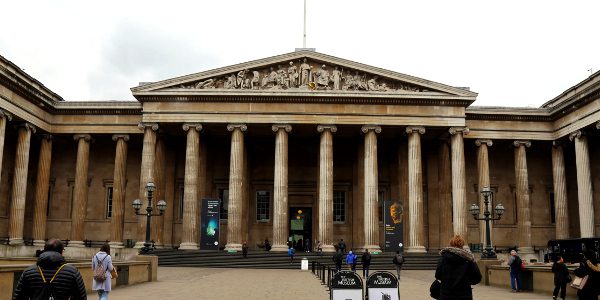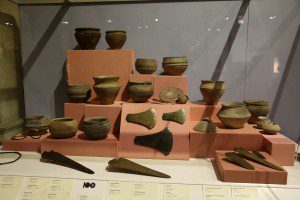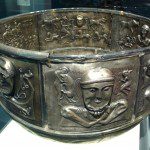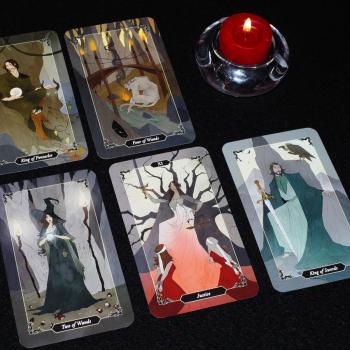For better or worse, most of us got our introduction to archaeology from Indiana Jones and Lara Croft. Our ethics around ancient artifacts come from Harrison Ford’s line early in Raiders of the Lost Ark: “That belongs in a museum!” Museums good, private collections bad. Study by experts good, weaponizing sacred objects bad… also very dangerous.

This idea of museums as the right and proper place for ancient items is reinforced when you visit some of the major museums. The National Museum of Ireland, the National Museum of Scotland, and the British Museum are all free to enter. They all allow photography. We shared the museums with hundreds of school children who were getting to see ancient history with their own eyes. I had a tremendous spiritual experience with the Gundestrup Cauldron, something I could not have done if it wasn’t in a museum. Surely this is the most useful and egalitarian approach for handling ancient artifacts, right?
Like so much in our society, though, the fact that museums have been around for hundreds of years and they benefit many causes us to ignore some unpleasant facts about how these objects came to be where they are. Just because “we’ve always done it this way” doesn’t mean there isn’t a better way.

Tomb Raiders. We’ve been burying our dead with grave goods for at least as long as we’ve been human. And since shortly after that, there have been grave robbers and tomb raiders coming along to dig them up and steal anything of value. There have been many rationalizations for this: “the dead can’t use it – why let it go to waste?” “we’ve always done this” and “we’re learning so much by digging up these graves.”
In the West, the vast majority of people believe that at death the soul leaves the body, and a significant minority believes that when brain activity stops, the person is gone forever – so grave goods don’t matter. But the fact remains that we know virtually nothing about what happens after death. We cannot be certain the dead do not need or want the items that were buried with them – can we not respect their beliefs and wishes, even if we don’t share them?
Respect for the dead. All three major museums we visited had Egyptian mummies on display. At least they weren’t unwrapped, but these are still human bodies. The National Museum of Ireland has four bog bodies that were preserved for 2,000 years or so and are now on display. They’re displayed behind cubicle-like screens, but I imagine that’s more to protect the delicate sensitivities of some living visitors than to provide a modicum of dignity for the dead.
These aren’t tools or artwork. These are the bodies of people who once lived in this world, and who may (or may not) be living still. In the case of the Egyptians, we know it was considered necessary for parts of the soul to return to the body on a daily basis – is that still possible with their mummies removed to a faraway land?

I offered prayers for the dead where I could. There are so many mummies in the British Museum I would have been there all day doing nothing else. A few I felt moved to pray for specifically, others I prayed for collectively. May their souls find the peace that was denied their bodies.
Knowledge vs. entertainment. I love history and learning about the past. I’m grateful for what we’ve learned from mummies, bog bodies, and grave goods. And I sometimes wonder how I’d feel if 5,000 years from now someone opened my grave and pored over my body and whatever I was buried with.
If it was necessary to add to the body of knowledge at the time, I think I’d be OK with it. If it helped tell my story and the story of my people to some future generation, I think I’d see that as a way of being of service. So if by some miracle both this blog and my body are preserved long enough that they’re of historical value, you have my permission to study whatever remains.
But when you’re done, put me back where you found me. Contributing to the state of human knowledge is one thing. Being on display as a grotesque curiosity is something completely different.
Those are my thoughts. Yours may be different… and so may the thoughts and wishes of the Egyptians whose mummies now reside 2,000 miles from the Nile.
Imperialism. Let’s not ignore the elephant in the room. While some of the artifacts are local to the museums, many – particularly in the British Museum – come from around the world, and many of them were forcibly removed from their original locations by imperial governments and wealthy individuals supported by empires.
Perhaps the most famous (or infamous) example of such looting was the removal of the Parthenon Sculptures from Athens to London by Lord Elgin in 1801-1805. This was done legally – Elgin had permission from the Ottoman Empire, who ruled Greece at the time. One empire gave another empire permission to plunder an occupied country, with no input from the Greeks.
The British Museum argues that the sculptures cannot be replaced on the Parthenon, the Acropolis Museum in Athens has roughly half of them, and leaving the other half in London “allows different and complementary stories to be told about the surviving sculptures, highlighting their significance within world culture and affirming the place of Ancient Greece among the great cultures of the world.”
Perhaps. But when we take artifacts out of their original context, we lose a significant part of their story. And if we are not very mindful, their display in foreign lands affirms the power of imperialism and of “might makes right.”

It has long been argued that it is necessary to remove important artifacts for “safekeeping” – if 4,000 year old Minoan art wasn’t in the British Museum, it would be hidden away in some billionaire’s mansion and perhaps lost or even destroyed. Museums good, private collections bad. Given the damage and destruction we’ve seen in the Middle East recently – some intentional, some the side effects of war – that argument has some merit. Yet many times imperial “safekeeping” is necessary only because of violence caused by the very presence of empires.
So what do we do? I have no grand call to action. The museum system is largely (though not entirely) a good thing. Both ethical and academic standards have greatly increased since the early days of antiquarians and treasure hunters. Some artifacts have been returned to their home countries.
But I would like to see greater respect for the dead, including reburying bodies that aren’t being actively studied. I’d like to see greater respect for objects that are or were considered sacred by their cultures. Mostly, I’d like to see an end to the plunder of imperialism, whether the plunder is historical artifacts, natural resources, or the exploitation of people.
Not everything belongs in a museum.

















